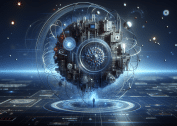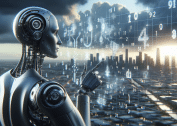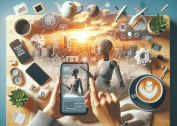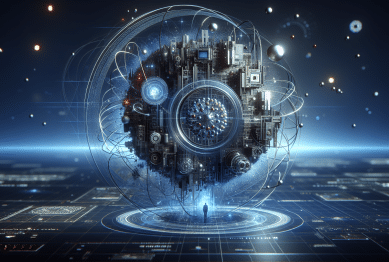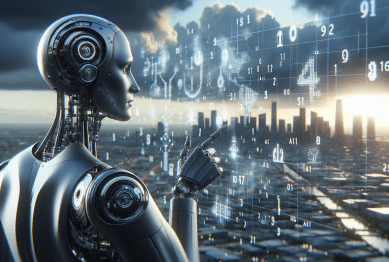Artificial intelligence is quietly reshaping how people connect, work, and solve challenges. In this guide, discover the unexpected ways AI integrates with daily experiences, its influence on emerging careers, and important considerations for responsible use—plus, what’s next for this evolving technology.
AI in Everyday Technology: More Than Meets the Eye
Artificial intelligence powers so many systems people use daily—sometimes without even knowing it. When someone receives an accurate movie suggestion on a streaming platform or unlocks a phone with facial recognition, AI sits quietly behind the scenes. These examples illustrate how machine learning, one of the most well-known branches of AI, helps translate preferences and habits into more seamless, personalized digital experiences. Chatbots solve issues online and virtual assistants answer general queries with remarkable speed and context, all thanks to deep learning algorithms.
AI-driven smart devices are also increasingly popular in homes, including smart speakers and thermostats. Voice recognition tools learn to interpret speech patterns for different users, gradually improving their accuracy over time. The same technology helps organize photo libraries, identify objects in images, and even transcribe conversations. For busy households, automated reminders, smart grocery lists, and calendar notifications demonstrate the convenience AI provides, taking care of time-consuming micro-tasks in the background.
Outside the home, AI manages logistics, optimizes transportation, and powers much of the online shopping experience—from dynamic pricing to inventory management. These invisible helpers transform industries but also benefit individual users by making commerce, travel, and communication more efficient. It’s not magic—it’s carefully engineered neural networks at work, creating opportunities for ease and productivity that didn’t exist just a decade ago (Source: https://www.nsf.gov/news/special_reports/ai/).
Breaking Into New Fields: AI and Emerging Careers
The influence of AI continues to ripple through the modern workforce. As organizations automate more tasks, some job roles transform and completely new opportunities arise. Positions for machine learning engineers, data scientists, and AI ethicists are in demand as companies race to harness the competitive advantage of intelligent systems. Even traditional sectors such as healthcare, finance, and customer service now value professionals who can work with AI-powered platforms or interpret data produced by them.
What surprises many is how AI skills open doors beyond the technology sector. Marketers use predictive analytics to tailor campaigns, retailers adjust inventory with forecasting software, and educators create custom learning plans using intelligent tutoring systems. Online education providers, including prominent universities and nonprofit platforms, now offer accessible artificial intelligence courses for beginners and professionals alike. These structured programs provide foundational knowledge, practical projects, and often lead to new career opportunities in rapidly growing sectors (Source: https://ocw.mit.edu/courses/6-034-artificial-intelligence-fall-2010/).
AI isn’t just about programming. Roles in policy development, digital content curation, and human-centered design require creative thinkers eager to solve complicated challenges. The shift toward automation is not eliminating work; instead, it is uncovering fresh areas where human skills and machine intelligence complement each other. For those curious about the future of work, learning about artificial intelligence is a strategic move that positions anyone for a dynamic career landscape.
Healthcare Innovations From Machine Learning Advances
AI’s applications in healthcare are generating hope and efficiency in surprising ways. Predictive analytics now aid in diagnosing illnesses and managing health records, while imaging software helps detect abnormalities in radiology scans. These tools allow medical professionals to catch problems earlier, sometimes before symptoms even appear. This transformation isn’t just theoretical; it’s increasingly present in hospitals, clinics, and telemedicine services all over the world (Source: https://www.hopkinsmedicine.org/health/conditions-and-diseases/artificial-intelligence-in-health-care).
Personalized medicine, driven by vast health data sets, can tailor treatments based on an individual’s genetics or lifestyle. AI-powered chatbots provide fast responses for non-emergency queries, while wearable devices monitor heart rate, activity levels, and even sleep. These systems all rely on real-time data analysis and adaptive learning. For patients and providers, the efficiency gained translates to more informed care decisions and better long-term health outcomes.
However, as AI tools in healthcare become more advanced, ethical considerations around data privacy and algorithmic transparency grow. Balancing the benefits of early identification and efficient diagnoses with the responsibility to safeguard sensitive patient information is a priority for researchers, developers, and policymakers alike. Collaborative efforts between medical professionals and AI specialists are defining new standards for safety and effectiveness.
Everyday Security Boosts: AI and Digital Protection
Cybersecurity and privacy protection are critical issues as the digital world expands. Artificial intelligence provides robust solutions to these contemporary challenges. Security software powered by machine learning constantly scans for unusual patterns—flagging potential threats, identifying malware, and blocking suspicious activities faster than traditional methods. This proactive approach helps businesses and consumers alike minimize risks without requiring constant oversight.
On personal devices, AI systems identify attempts to access sensitive data or bypass security protocols. Biometric authentication, from fingerprint readers to facial scans, leverages advanced algorithms that adapt to users’ changing features and behaviors. These methods reduce friction and limit unauthorized access. Meanwhile, businesses use AI to automate threat analysis, reducing response times and increasing accuracy in detecting evolving cyber threats (Source: https://www.nist.gov/artificial-intelligence).
Still, no security technology is foolproof. Experts encourage combining AI-powered safeguards with ongoing education, strong passwords, regular updates, and ethical data management. As artificial intelligence in cybersecurity continues to improve, a dynamic partnership between human awareness and automated monitoring offers a practical path for digital safety at home and in the workplace.
Smart Transportation: AI Steering the Future of Mobility
Commuting and travel are being reimagined through the lens of AI. Urban planners now rely on predictive models to relieve traffic congestion, optimize public transportation, and even design safer cities. Self-driving vehicle prototypes, guided by machine vision and decision-making algorithms, have moved from science fiction into controlled testing and limited real-world use. Fleet management systems monitor vehicle health, streamline routes, and reduce fuel consumption, all by crunching millions of data points each second.
Ride-hailing apps, on-demand carpooling, and smart mapping systems help millions get to destinations efficiently. These applications weigh countless factors in real-time: street closures, demand spikes, and preferred routes. The result for commuters is shorter journeys, fewer delays, and a more adaptive transportation network. Automation extends to drones and delivery robots, quietly reshaping how goods and services flow through modern cities (Source: https://www.transportation.gov/policy-initiatives/automated-vehicles).
The impact of artificial intelligence on mobility goes beyond technology—it influences urban design, environmental policies, and accessibility. Researchers continue to explore how AI can make roads safer, transport greener, and infrastructure smarter. As companies invest in the next generation of transportation tools, it’s clear that intelligent systems are steering society toward a more responsive mode of movement.
Challenges and Responsible Use: Keeping AI in Check
Innovative as it is, artificial intelligence brings new challenges. Bias in AI models, data security issues, and the risk of over-reliance on automation spark ongoing debate. Researchers and advocates are calling for greater transparency, diverse training data, and ethical frameworks to guide development. Stewarding these technologies responsibly has shifted from a technical concern to a societal priority.
Educational initiatives promoted by global organizations and universities help users, developers, and leaders build a solid understanding of AI’s limits and capabilities. Guidelines for transparency, explainability, and accountability are being woven into curriculum and public policy. These efforts aim to reduce negative outcomes—like privacy breaches or unfair algorithmic decisions—by equipping communities with tools to question and refine AI solutions (Source: https://www.brookings.edu/research/principled-artificial-intelligence-mapping-consensus-in-ethical-and-rights-based-approaches-to-principles-for-ai/).
As technology progresses, staying curious and informed is the surest way to adapt. AI has immense potential, but only when used thoughtfully and inclusively. Watching this interplay between innovation and ethical responsibility is one of the defining stories of our time.
References
1. National Science Foundation. (n.d.). Artificial Intelligence. Retrieved from https://www.nsf.gov/news/special_reports/ai/
2. MIT OpenCourseWare. (n.d.). 6.034 Artificial Intelligence. Retrieved from https://ocw.mit.edu/courses/6-034-artificial-intelligence-fall-2010/
3. Johns Hopkins Medicine. (n.d.). Artificial Intelligence in Health Care. Retrieved from https://www.hopkinsmedicine.org/health/conditions-and-diseases/artificial-intelligence-in-health-care
4. National Institute of Standards and Technology. (n.d.). Artificial Intelligence. Retrieved from https://www.nist.gov/artificial-intelligence
5. U.S. Department of Transportation. (n.d.). Automated Vehicles Policy Initiatives. Retrieved from https://www.transportation.gov/policy-initiatives/automated-vehicles
6. Brookings Institution. (n.d.). Principled Artificial Intelligence: Mapping Consensus. Retrieved from https://www.brookings.edu/research/principled-artificial-intelligence-mapping-consensus-in-ethical-and-rights-based-approaches-to-principles-for-ai/



